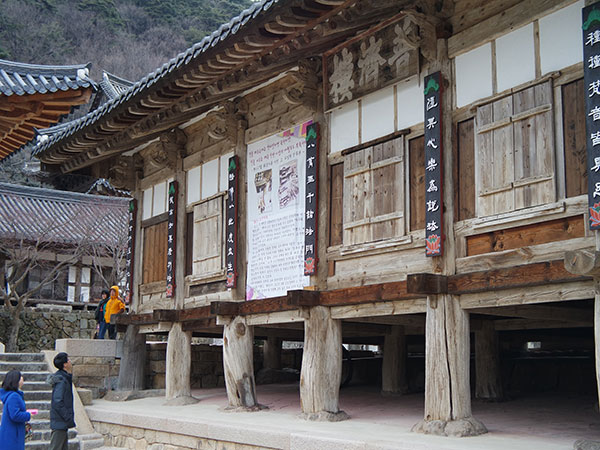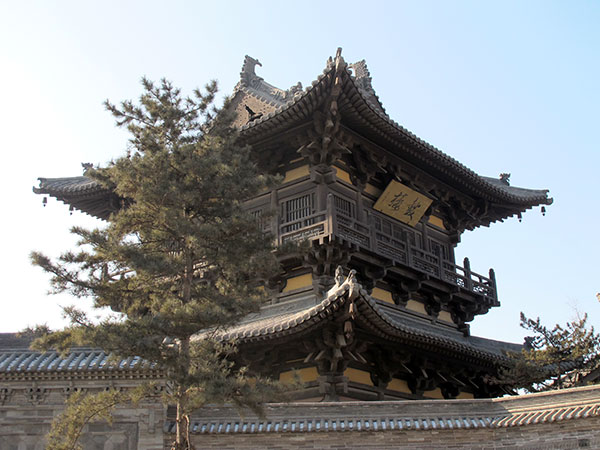As another must-see attraction in
Datong, the complex of Huayan Monastery is located on the southwestern side of Datong City, Shanxi Province, China. It gains the name because there is a cave called Huayan Cave at the south side of the temple. Huayan Temple is the largest and most perfectly preserved temple of the Liao (916-1125) and Jin (1115-1234) dynasties in China.
Brief History
There is no historical record about the year in which the monastery was originally built. Some people says it was built in Tang Dynasty, some says in Northern Wei Dynasty. Currently the most accepted construction age of it is the Liao Dynasty. Built during the Liao Dynasty (907 – 1125 ), it was the imperial ancestral temple, enjoying prominent position at that time. Then it was destroyed in a war. In 1140 during Kin Dynasty, the temple was reconstructed. The temple was partly destroyed in the war at the end of the Liao Dynasty, and was rebuilt in the 3rd year (1140) of the Tianquan reign of the Jin Dynasty. Afterwards, it survived wars and disorders, rises and declines of times. It was rebuilt in the reigns of Xuande and Jingtai of the Ming Dynasty (1368-1644). In the middle period of the Ming Dynasty (1368 – 1644), the temple was divided into two parts, the Upper Huayan Monastery and the Lower Huayan Monastery, each having its own temple gate and structure. The upper one referred to as the Grand Hall housing five large Ming Dynasty Buddhas, and the lower section referred to as the Sutra Temple containing a library of some 18,000 volumes of Buddhist writings. After several repairs in the Qing Dynasty (1644-1911), the temple formed today’s scale.

After the founding of New China, the relevant government departments appropriated funds for many times for the repair and protection of this Temple. In 1961, it was listed as a national key cultural relics protection site. In 1963, the upper and lower temples were integrated into one, and was given a collective name of the Huayan Temple. During “Cultural Revolution” period, Huayan Temple was changed into a museum, which was why the buildings, statues, heritages in the temple were well preserved in this revolution. Now, the Huayan Monastery is the largest and best preserved monastery of the Liao Dynasty in existence in China.
Main Attractions to See
The temple occupies a total area of more than 16,600 square meters. The main builds in the temples include Upper Huayan Monastery, Lower Huayan Monastery and Huayan Pagoda.
【Upper Huayan Monastery】
The upper temple is centered on the Great Hall and comprises of two yards, the temple gate, the passing hall, the Kwan-yin Pavilion, the Ksitigarbha Pavilion, and two wing-bays, etc. The buildings are compactly arranged.
The Great Hall stands on a 4-meter-high platform surrounded by handrails. In front of the platform, there are stone stairs. The Great Hall is 5-bay long and 9-bay wide, occupying an area of more than 1,550 square meters, being the largest hall that was built in the Liao and Jin dynasties so far. There is a 3-bay wide memorial archway of Qing style on the platform with hexangular clock and drum towers standing on both sides. These towers were added in the Ming Dynasty. Beneath the front eaves three plank shutters are installed. All the doors have a single-eaved hip roof. There are five statues of Buddha on the central altar inside the Great Hall. Three of them in the middle were made in Beijing City in the Ming Dynasty. The statues have a flat face, and their buns are decorated with pearls. 20 attendants stand leaning a bit forward, with different expressions and postures. Such special modeling is quite rare in China.
The walls surrounded the hall are painted over a huge mural, the large scale of which is also rare in temple frescoes in the country.
【Lower Huayan Monastery】
Lower Huayan Monastery is not far away from the Upper Huayan Monastery. The main building in Lower Huayan Monastery is the Sutra Hall (Bojia Jiao Zang Dian), which was originally built in 1038 and houses 38 sutra cabinets that are constructed like miniature buildings of the period; there are three notable Liao sculptural groups with Shakyamuni, Maitreya, Amitabha, and Bodhisattvas sitting on the altar, solemn quiet. The hall is five bays wide, with a hip-gable roof.
【Huayan Pagoda】
Huayan Pagoda is the second largest pure wooden tenon and mortise structure after Yingxian Pagoda in the country. This pagoda is 43 meters high. Under the pagoda is a 500-square-meter underground palace, which was constructed with 100 tons of copper.
There are the green bamboo forest and the old and strong pins inside and outside of the monastery.
Travel Guide
【Chinese name】: 华严寺
【Recommended time to stay】: 2 hours
【How to get to Huayan Monastery】: As Huayan Temple is located in downtown of Datong, it enjoys convenient transport. Taking a taxi is the most convenient way to get there if you can not read Chinese. Or if you want to save money, you can take Public Bus 18 from downtown Datong to get there directly.

